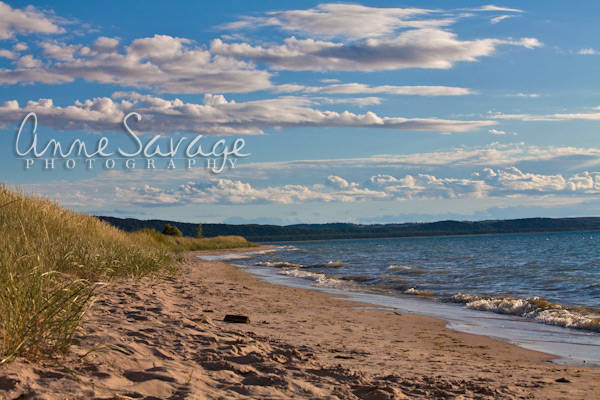
The following essay is a guest post by Denny Green of Clean Water Action – Michigan. Enjoy.
Stick that in your pipeline and smoke it!
Anybody who’s ever visited Michigan’s Great Lakes has been taken aback by their inspiring splendor and breath-taking beauty, laid out for all to see. What you don’t see, however, are Enbridge’s two aging pipelines, known as Line 5, that run under the Straits of Mackinac, the waterway that joins Lake Michigan and Lake Huron. And these old pipelines are not only hidden beneath this splendor and beauty, but they actually threaten to destroy it.
You see, Enbridge’s Line 5 pipeline is a 62 year-old system that carries nearly 23 million gallons of crude oil every day, right through the middle of the pristine Great Lakes. (My uncle is 61, and we no longer let him carry the Thanksgiving turkey to the table.)
To give you an idea of how old and out-of-date these pipelines are, I’ll start by telling you that they were built in 1953, during the Eisenhower administration, when a loaf of bread set you back 16¢, a dozen eggs were 72¢, little green Plastic Army Men were the new toy on the market, Al Kaline made his major league debut with the Detroit Tigers and “The Doggie In The Window” was a smash hit. (Marty McFly didn’t even go that far back in Back to the Future!)
So, to trust these decrepit old pipes with such an important, and significantly risky task is beyond irresponsible—especially considering that any leak could spew toxins into the largest grouping of freshwater lakes in the world, and the source of drinking water for over 35 million people. The Great Lakes account for roughly 20 percent of the fresh surface water supply in the world and that’s not something we can afford to treat recklessly.
Furthermore, the force of the currents in the straits (which can create a water flow more than 10 times greater than the flow of Niagara Falls) switches bi-directionally from eastward to westward. So depending on which way it’s moving at the time of a leak or spill, the thick, black heavier-than-water (and impossible to completely clean) bituminous crude oil could end up flowing into Lake Huron or back the other way into Lake Michigan, and most likely back and forth through the Straits repeatedly.
Back when Line 5 was built, the Great Lakes Submerged Lands Act had not yet been adopted. The Act stipulates that any company presently building a pipeline on the bottom of the Great Lakes must go through a permitting process to prevent the pipeline from posing a threat to the waters and the public. But, Line 5 hasn’t had to get any such approval for its use and occupation of the Great Lakes bottomlands. You can view a video of a diver inspecting Line 5 HERE.
Between 2005 and 2013, Enbridge spilled or released nearly 92,000 barrels of hydrocarbon products like crude oil and natural gas around the country. Between 1996 and 2013, the number of “reportable spills” — that’s any spill large enough for Enbridge to formally notify a regulatory agency — leaks and releases went from 54 to 117 (more than double). In the summer of 2014, Enbridge’s Line 5 was found in violation of the spacing requirements of its 1953 easement, due to missing support structures.
In fact, an Enbridge pipeline failure is responsible for one of the worst and most expensive oil spills in U.S., in July of 2010 — Line 6b, another outdated structure from the 1960s (but still newer than Line 5) ruptured near a tributary of Michigan’s Kalamazoo River, spilling about 1 million gallons of tar sands crude. The spill devastated sensitive eco-systems and residents of the nearby communities, and cost about $1 billion in cleanup. (Now remember, Line 5 carries 23 million gallons a day—nearly one million gallons an hour!)
According to the National Transportation Safety Board (NTSB), the spill was a result of pipeline corrosion and “pervasive organizational failures”. NTSB concluded that Enbridge was well aware that the section of the pipeline was vulnerable, and still failed to take any action.
Well, one has only to look back at the 2010 British Petroleum (BP) oil spill in the Gulf of Mexico to consider the utter devastation that a spill like that would do to our Great Lakes.
Fortunately, there is hope, in the form of a well-needed move made by Representatives Sarah Roberts (D-St. Clair Shores), Jeff Irwin (D-Ann Arbor), Gretchen Driskell (D-Saline), and Tom Cochran (D-Mason) who introduced a package of bills seeking more state oversight for oil and gas pipelines throughout Michigan.
The bills would increase pipeline safety and protection for the people and natural resources of Michigan, stipulating that pipeline operators comply with a host of actions, from state permits, regular Department of Environmental Quality (DEQ) inspections, submitting emergency response plans (and conducting leak response drills), immediately notifying the DEQ and all impacted property owners of any known leaks.
Whenever and wherever public safety, health, economy and our very way of life are concerned, we should never be willing to throw ourselves at the mercy of an infrastructure whose stability wouldn’t be trusted in any other aspect of our daily lives. (We do regular maintenance on our cars, lawnmowers, BBQ grills, and cell phones — and that last one is most often just to maintain the highest degree of Candy Crushing abilities.) It’s time to put our real priorities in order. Even the smallest failure could have devastating and widespread — not to mention long-lasting — ramifications beyond our wildest comprehension.
This pipeline safety legislation put forth by these State Representatives is a long-overdue step in the right direction — and an effective way of telling Enbridge and other would-be polluters to “go jump in a lake . . . but seriously, just stay out of the lake.”
[Photo by Anne C. Savage, special to Eclectablog]



